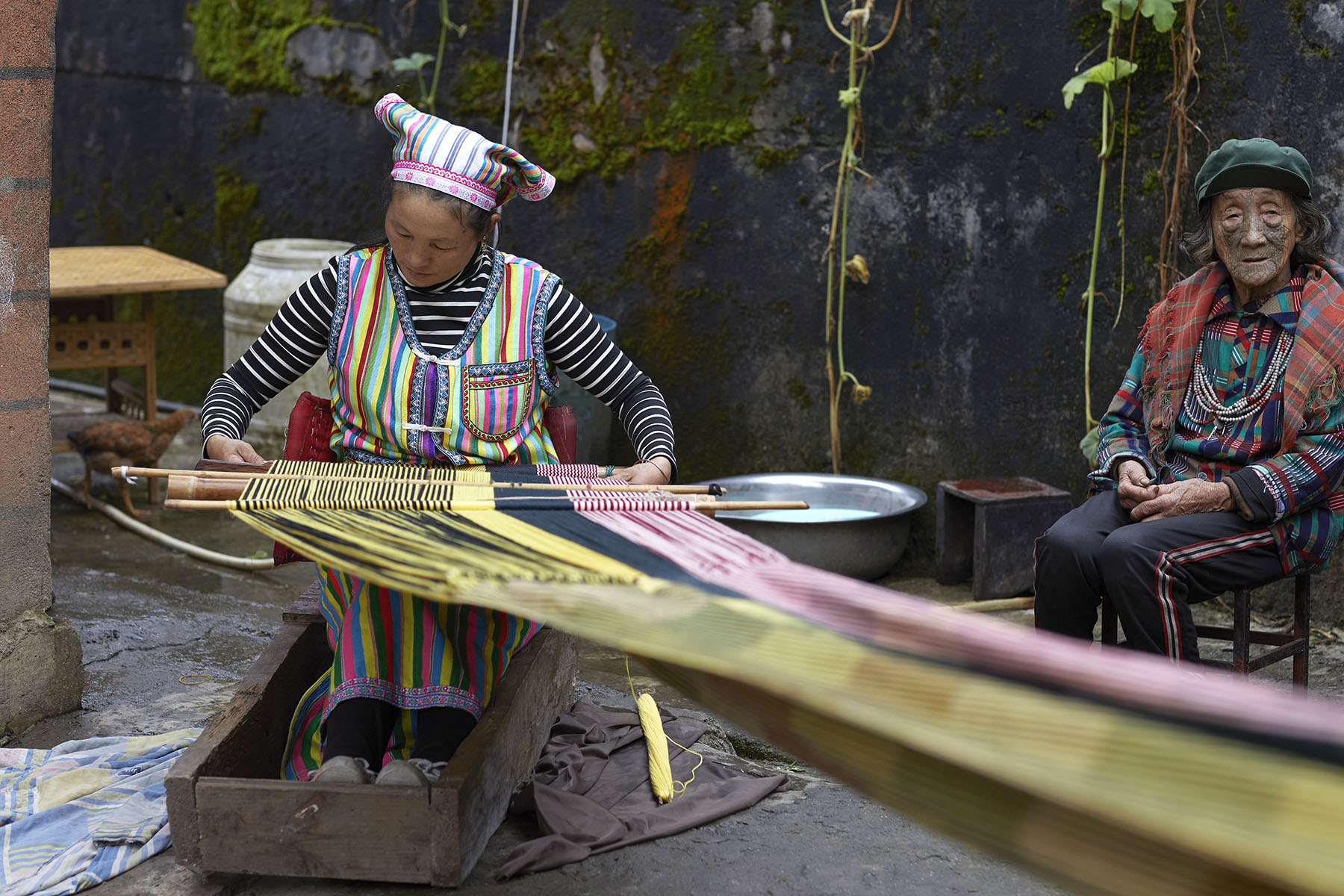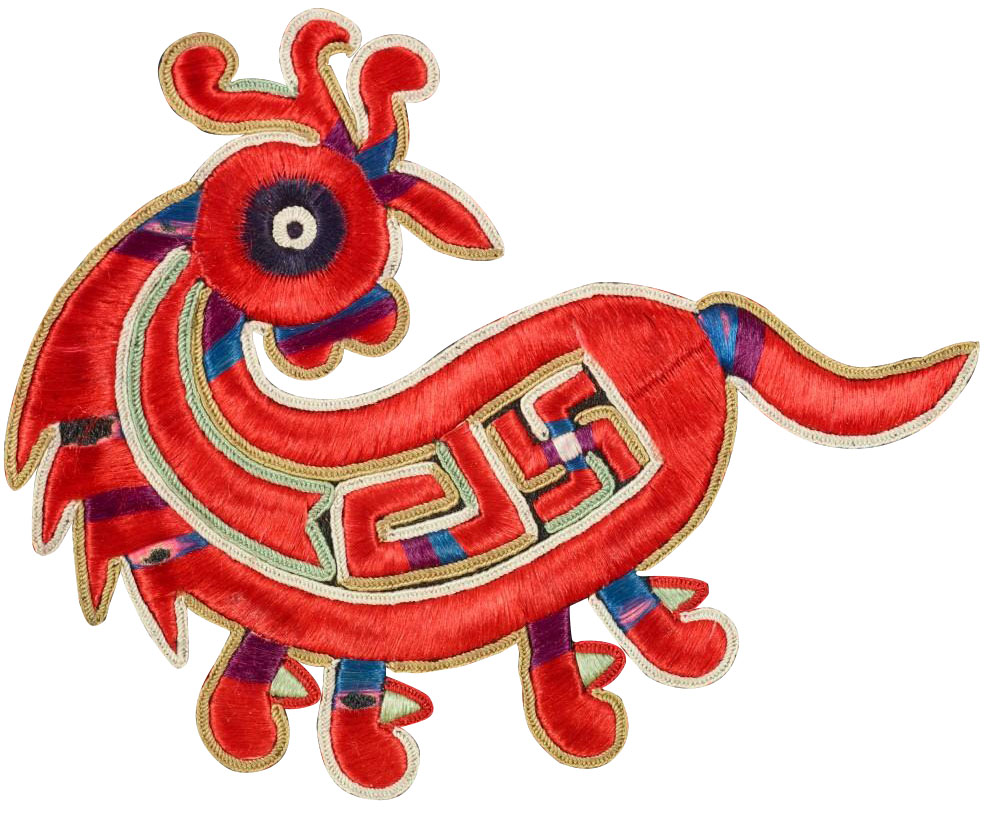
Liu Chengming says he could sense a weaver's emotions simply by feeling the cloth. "When she is at peace, the fabric is even and smooth; if her mind is troubled, tiny lumps may appear where the weave falters." As the director of the Shanghai-based sustainable brand Naze Naze, Liu, 32, has traveled between Shanghai and a small county in Southwest China's Yunnan province several times a year for the past five years.
Deep in a valley carved out by the Derung River near the China-Myanmar border resides one of China's smallest ethnic groups — the Derung people, whose population is estimated to be around 8,000. Within their small numbers, they have preserved a rich weaving tradition. The same cloth they wrap around themselves by day becomes their blanket at night. The fabric's vibrant color combinations have earned the Derung people the nickname "the people draped in rainbows".
Liu serves as a liaison, guiding local weavers to create fabrics that brand designers later craft into pouches, handbags and blankets, perfect for people seeking warmth in air-conditioned rooms.
READ MORE: A tradition worth dyeing for
"The design is minimal — why add more when the colors are already so captivating?" says Liu. "We want customers to focus on the rich hues and feel the softness — and the slight lumps — that come from the looser weave of handwoven fabrics. Besides, knowing the effort that goes into it, you wouldn't want to cut the fabric too much for the sake of design."
The colors flow in stripes of varying widths, creating a visual musicality that evokes the rhythm of local life, in Liu's mind. "For us, the key to working with local weavers is to move with that rhythm, not against it," he says.
In practice, this means coordinating production around the cycles of local agricultural activities, which are largely dictated by nature. Fortunately for Liu and his team, nearly 200 of the 365 days in a year are rainy, providing ample time for weaving.
"The Derung people have deep family traditions and we honor that," says Liu, adding that the brand has never tried to move the weavers to Shanghai. "A mother may become a grandmother and help care for the baby for a while, and that's perfectly fine. A weaver can come and go as she pleases — there's no constraint. All we ask is that they pour their heart and soul into their craft, to weave with passion."
Liu believes the brand sustains its passion by supporting weavers' personal growth. "We take them to Shanghai, where they work as sales assistants for a day, gaining pride and rare insight into branding and the customers. Our ultimate goal is to involve them in the design process so they weave their own rainbows, rather than just following our designers' color choices," he says. "We are fully transparent about pricing — it's essential for the weavers to understand the cost of modern commerce to become our creative partners in the true sense of the word."

That cost, ever on the minds of designers and brand owners, can be prohibitive, notes Yang Jie, who teaches at the Beijing Institute of Fashion Technology. "Much has been said about tapping into the country's rich fashion legacy, often rooted in ethnic traditions. But one obstacle is that this legacy often involves time-consuming handiwork, like embroidery, which drives up production costs," says Yang.
Last year, designers from the Chinese fashion brand JNBY drew inspiration from one branch of the ethnic Miao people — one of over 100 branches, each with its own distinct style — who embroidered with slivers of tin, often against a dark background. This was three years after the Italian fashion brand Marni launched its capsule collection Marni Miao, inspired by Miao people's unique and elaborate use of embroidery, weaving, lace and pleating techniques.
As designers from China and beyond flock to southwestern China — home to many ethnic groups — for inspiration, Liu believes the locals also need to be inspired.
Last November, he organized a large gathering for Naze Naze weavers from four locations across three provinces, representing seven ethnic groups. "The connection was instant: they spoke entirely different dialects but shared one common language — weaving," says Liu, who routinely spent three days on the road from Shanghai just to reach the Derung River Valley of his weavers.
"The valley is so narrow that there's no space for a soccer field, which partly explains the popularity of basketball among local youngsters," he says. "But don't think their lives are dull — quite the opposite. They have easy access to mobile phones and short videos just as they do to crystal clear water and campfires."
Naze Naze supplies Derung weavers threads — mostly cotton and silk, as the locals still plant hemp on small plots, as their ancestors did. The resulting hemp cloth is reserved for gifting on special occasions.
ALSO READ: Food, song and dance: Bouyei route to preserving cultural heritage
"In Derung dialect, naze naze means 'no hurry'. The phrase is used to comfort both others and oneself during tasks that require time and care, like weaving," says Liu. He envisions that with the brand's growth, there may come a day when a curated line of household goods is created — one where, while the wife weaves cloth, the husband weaves baskets, as many local men often do. In this way, they can weave slowly, and together.
Optimism — that's what Yang discerns in the embroideries created by members of the Miao group, to which his mother belongs. "When a Miao artisan deliberately leaves a small space within the pattern unembroidered, it symbolizes an unfulfilled wish. That space is filled once the wish is granted," he says. "Their hope for life is as strong as their expression is subtle."
Since 2008, he has been incorporating traditional Miao fashion elements into his designs.
"For one collection, I told my embroiderers I wanted my own experiences sewn into the skirts," says the 43-year-old, who moved to Beijing from his hometown in Hunan province to study fashion before continuing his education in Milan. "The ladies stitched butterflies, an ancient Miao totem, with wings strong enough to carry them across oceans.
"Then one of them depicted the Colosseum in Rome, placing my face in one of its arched gates. She told me that by doing this, she felt as if she was seeing the world through my eyes."


